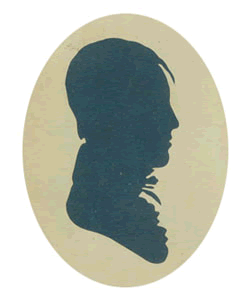
No image available
Romeo Lowery
Gender:
Male
Born:
October 8, 1793
Died:
January 30, 1856
Home Town:
Farmington, CT
Later Residences:
Southington, CT
Marriage(s):
Elizabeth Whittlesey Lowery (May 14, 1828)
Laura Whittlesey Lowery (August 1, 1841)
Laura Whittlesey Lowery (August 1, 1841)
Biographical Notes:
Romeo Lowery was the son of Daniel and Anna (Munson) Lowery. He practiced law in Southington, CT. Lowery served as a Connecticut State legislator and judge.
In addition, he invested in local companies which eventually became part of Southington's two most successful firms, Plant Bros. Manufacturing Company and Peck, Stow & Wilcox.
In addition, he invested in local companies which eventually became part of Southington's two most successful firms, Plant Bros. Manufacturing Company and Peck, Stow & Wilcox.
Additional Notes:
The house that Romeo Lowery built in Southington in 1828 at 101 North Main Street still stands today. It remained in his family until 1964.
Education
Years at LLS:
1819
Other Education:
Graduated from Yale College in 1818.
Profession / Service
Profession:
Lawyer; Political Office
Admitted To Bar:
1820
State Posts:
State Representative (CT) 1830, 1838
State Senator (CT) 1844-1848
State Senator (CT) 1844-1848
Local Posts:
Justice of the Peace 1824-1847
Judge of the County Court 1832-1835
Judge of the County Court 1832-1835
Immediate Family (Why only immediate family?)
 The Citation of Attendance provides primary source documentation of the student’s attendance at the Litchfield Female Academy and/or the Litchfield Law School. If a citation is absent, the student is thought to have attended but currently lacks primary source confirmation.
The Citation of Attendance provides primary source documentation of the student’s attendance at the Litchfield Female Academy and/or the Litchfield Law School. If a citation is absent, the student is thought to have attended but currently lacks primary source confirmation. Records for the schools were sporadic, especially in the formative years of both institutions. If instructors kept comprehensive records for the Litchfield Female Academy or the Litchfield Law School, they do not survive. Researchers and staff have identified students through letters, diaries, family histories and genealogies, and town histories as well as catalogues of students printed in various years. Art and needlework have provided further identification of Female Academy Students, and Litchfield County Bar records document a number of Law School students. The history of both schools and the identification of the students who attended them owe credit to the early 20th century research and documentation efforts of Emily Noyes Vanderpoel and Samuel Fisher, and the late 20th century research and documentation efforts of Lynne Templeton Brickley and the Litchfield Historical Society staff.
CITATION OF ATTENDANCE:
[We are currently working to update and confirm citations of attendance.]
Contact Us
Do you have more information for the Ledger?
If you have family papers, objects, or any other details you would like to share, or if you would like to obtain a copy of an image for publication, please contact us at curator@litchfieldhistoricalsociety.org.